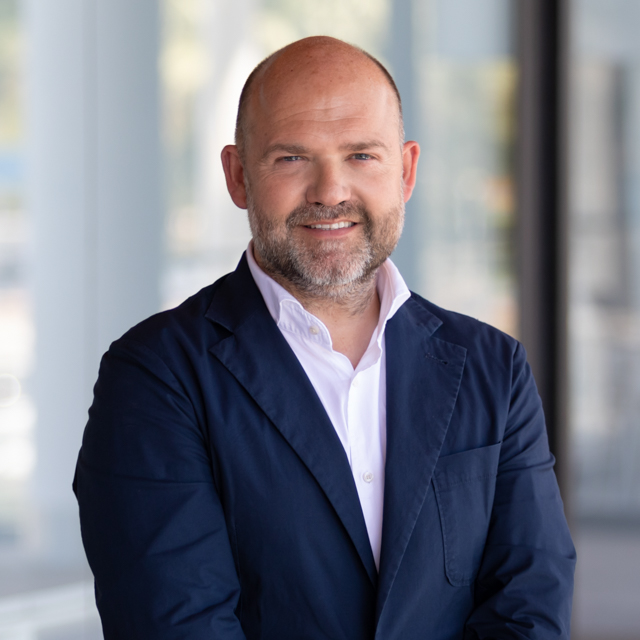“Investing in innovation and development is a key strategy for a country’s businesses”
- 13 June 2014
- Articles
Our current Manager in the Illes Balears Office joined Clarke, Modet & C º Spain just 4 years ago. His broad experience in R+D in the Chamber of Commerce of Mallorca, as well as its work as a speaker at conferences on Intellectual Property, allows us to refer to him as one of our most experienced experts in sectors such as tourism and internationalisation strategies.
1. Let’s start with an easy question. In short, what is a patent and what use is it?
A patent is an invention, something new which previously did not exist and which a National or International Registration Agency recognises as belonging to the applicant, granting him or her the exclusive right to its exploitation for a set period of time and within a defined territory (as definitive ownership).
2. People have a lot of questions when they want to patent an invention because they are uncertain as to whether they meet the requirements. How can they know if their invention is patentable or not?
It will be if it meets the requirements established in Article 4 of the Spanish Law 11/1986 on Patents which are as follows: novelty, whether it is of an inventive nature and if it is applicable within an industrial context when it is novel, involves an inventive step and has industrial application. If all three are met, the invention will almost certainly be granted a patent.
3. Let’s say I have been to the Patent and Trademark Office (SPTO) to begin the registration process for my patent and they tell me that someone else has already registered it. What should I do? Is there any way of knowing if an invention is already patented?
This could well be a serious problem in getting an invention patented. If the so-called State-of-the-Art is found to contain something identical or similar to your invention, then this will be an obstacle toward your application. One step that can be taken is to carry out a preliminary feasibility study on a possible patent, using technological intelligence to identify the prior rights already protected which may or may not affect one’s application. This is also a good way to prevent the making of unnecessary patent applications.
4. The Spanish Patent and Trademark Office has signed bilateral agreements with other IP offices worldwide. One of these is the Patent Prosecution Highway. Could you tell us what that is, how it works and what other agreements there might be?
This is an International Agreement that Spain signed in 2010, which facilitates the speedy processing of applications in the Patent Office of another country that is a signatory to the agreement, on the condition that the SPTO has previously examined the patentability requirements. It makes the registration process considerably easier.
Another such agreement is the 1970 Patent Cooperation Treaty (PCT) which sets out the procedure through which a Spanish patent can be extended to other countries.
5. What is your opinion with regard to R+D+i, investing in innovation and development as a way of creating wealth and revitalising a country’s economy?
In times of economic uncertainty like the present, investing in innovation and development is a key strategy for a country’s businesses. Together with internationalisation, these are the three basic pillars which can differentiate a company’s products and services, making it more competitive when looking to open up new markets further afield. Nevertheless, innovation and development should be backed by an appropriate protection strategy, above all in processes involving international market launches. Without this protection covering the various types of industrial and intellectual property rights, our efforts in this field may have been in vain or be of very little value.
6. Horizon 2020 and other programmes that aid research and innovation – can you tell us anything about their financing?
H2020 is a new European research and innovation programme which covers the years 2014 to 2020, replacing what had been until then the 7th Framework Programme. These initiatives seek to finance projects which create scientific excellence, technologies that make Europe more competitive when tackling the social challenges European society faces. These are the basic pillars of this programme.
7. You have a meeting first thing in the morning with a major Spanish university to talk about the importance of registering the students’ doctoral programmes, research, essays etc. How do you argue your case? How do you explain the importance of the official IP Agent who acts as an intermediary in the commercialisation process for these inventions?
As I said before, appropriate protection of research and development is basic when creating added value and ensuring an acceptable return on the resources invested over a certain period of time – not only human and technical resources but also economic resources. If an appropriate protective strategy for R+D+i is not implemented, the progress made may well lose all its value.
Companies such as Clarke, Modet & Co. help numerous universities and public and private research centres to implement suitable protection policies for their industrial and intellectual property, as well as assisting them throughout the process, intervening in the final transfer stage in order to identify potential partners and companies who might be interested in the results, assessing and accompanying the applicant through the legal part of the process and thus closing the complete innovation cycle.
8. What role does the internationalisation of a company play as far as the trademark is concerned?
It is of basic importance. In the globalised world we live in, with its interconnected markets, the export of our products and services under a registered trademark represents an appropriate and complete protective strategy, at least in the short to medium term. If not, we may come up against a serious problem, for example, when trying to commercialise our products and services abroad.
Our company gives the client prior assessment based on its internationalisation interests and policies, allowing the widest possible protection to be put in place, thus optimising the client’s resources.
9. The amended Intellectual Property Law includes a controversial concept, that of the “single window”. What is this exactly?
The so-called “single window” is an easy way to facilitate applications for individuals and companies which would otherwise have to be processed by a number of different bodies, with the enormous complexity which that entails. The aim is to ensure that the process becomes increasingly easier and transparent and that industrial and intellectual property is not marginalised.
10. As far as copyright (author’s rights) is concerned, what happens to all the content published on social networks, such as, for example, photographs and videos? Are we giving up our usage and exploitation rights?
This is a very delicate and complex area. The appropriate protection and exploitation of digital content is an area that is currently of immense importance, due to the growth and influence of the digital world and social networks on the economy.
The Conditions of Use of such social networks and websites should always be carefully read, as these contain the various clauses concerning industrial and intellectual property which determine whether or not we are effectively assigning our right to these images and videos, for example. We should also pay special attention to the digital content we upload to the internet and the copyright thereof, whether or not there are issues concerning pre-established third-party rights of exploitation in order not to infringe priority rights.
11. To what do we owe the emergence of TMCH and top-level domains? One area which has been prominent here is football. What do clubs gain by registering their trademark in this manner?
It is a true reflection of the importance of new technologies in the marketing and communication of products and services. Until now .com, .net and regional domains were the channels through which advertising and sales took place. This is now changing, with “sectorisation” becoming the rule, allowing those involved to reach out to consumers more directly.
Such is the case with domains such as .football, .hotels and .travel for example. It is now possible to reach end users much more directly, communicating and selling products and services more efficiently, more competitively, emerging as a basic tool in what has become known as “on-branding”.






